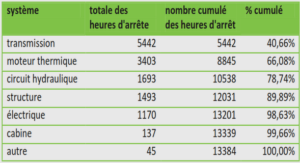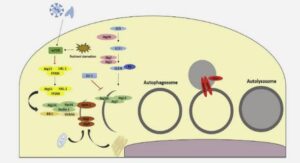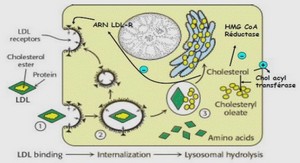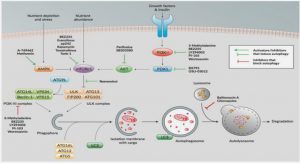IDENTIFICATION OF WETLAND LANDSCAPE TYPES IN FORESTED REGIONS: THE CASE OF BOREAL QUEBEC,CANADA
Because of increasing pressures that have resulted from timber harvesting, mining, hydroelectric development, and ecotourism (World Resources Institute 2000; Anielsky and Wilson 2006), there is an urgent need for acquiring reliable data on the quantity and distribution of wetlands in forest-dominated landscapes in order to integrate these important habitats into resource management, land-use planning, and conservation strategies. In Canada, even though there exist sorne provincial wetland inventories (Alberta (Vitt et al. 1996),
Nova-Scotia (http://www.gov.ns.ca/natr/wildlife/wetlands/ nswi.htm) and Prince Edward Island (Dibblee 2000), many provinces still do not have complete coverage, particularly in the boreal zone. It is generally believed that 12% of the country is covered by wetlands (1,240,268 km2 , Tamocai 2001). This proportion increases to 30% in boreallandscapes (World Resources Institute 2000). However, it must be stressed that these percentages of the area occupied by wetlands are gross estimates often only based on the knowledge of local resources managers (Zoltai and Pollet 1979; Zoltai 1988). One explanation for this paucity of data lies in the difficulty incurred in using existing classification systems with remotely sensed data. For example, the Canadian national classification system discriminates, at the first level, bogs from fens using nutrient regime (Wamer and Rubec 1997), which is confirmed by site-specifie data gathered from assessments of water geochemistry (Wheeler and Proctor 2000) or plant communities (Gauthier 1980). S
everal studies showed that such a distinction is possible by photo-interpretation (Couillard and Grondin 1986; Vitt et al. 1996) but because it is a very costly and time consuming method, it is rarely used at regional scales. A project aimed at producing a Canadian Wetland Inventory is in progress (www.cwi-icth.ca/), but it could still take several years before its results are published. In the meantime, land use planning and resource management is conducted without taking into account wetlands at the landscape level, whereas managers who need wetland maps to build spatially explicit habitat models at the same scale are also limited by the availability of wetland distribution maps. As a possible solution to the growing need for a simple and reliable wetland database in forest-dominated landscapes, we recently developed a wetland classification system designed to be used with forest inventory maps (Ménard et al. 2006). The advantage of this method over aerial photography approaches (as the one proposed by Rempel et al. 1997) is that forest inventory maps have already been interpreted, are ready to use, and are available at a scale of 1 :20,000 almost everywhere forests are managed. Moreover, these maps are well known and commonly used not only by forest managers, but also by ecologists and wildlife biologists.
According to Zoltai and Pollet (1979), two factors control wetland dynamics in Canada and are likely to have a strong influence on their regional distribution at the landscape level. Climate controls wetland development whereas landform and geology control wetland distribution. Although sorne ecological classification systems that are currently used in conservation and management in Canada are based on these two factors, their ability to adequately delimit wetland landscape types has never been tested. For example, in Quebec, the ecologicalland classification system was developed by the Ministère des Ressources naturelles et de la Faune (MRNFQ) and is used primarily for forest management. It is based on climate as expressed by vegetation and recognises, at its largest scale, 10 bioclimatic domains (Saucier et al. 1998). In contrast, another system, the ecological reference framework was developed by the Ministère du Développement durable, de l’Environnement et des Parcs (MDDEP) and is used in the establishment ofprotected areas based on a coarse-filter approach. lt recognises 13 natural provinces, similar to Canadian ecozones (Li and Duerne 1999). Following the recommendations of Bayley et al. (1985), we believe that an evaluation of the ability of such ecological classifications that are based on terrestrial features to delineate wetland types and regions should be done using actual resource data. Using forest inventory maps as a tool, our objectives were 1) to get a more precise portrait of the distribution of different wetland types’ at a regional scale over forested landscapes in boreal Quebec; 2) to delineate, based on multivariate analysis, wetland landscape types, which are homogenous in terms of wetland types and proportions; 3) to determine the importance of climate and landform in shaping their distribution; and 4) to evaluate the validity of different ecologicalland classification systems to adequately represent wetland diversity.
Wetland classification methodology based on forest inventory maps Forest inventory maps are produced by the MRNFQ from aerial photographs at a 1:15,000 scale. Each leaflet covers 252 km2 and has a scale of 1:20,000. The minimum mapping unit is 4 ha for forested swamps and 1 ha for all other wetlands and water bodies (Létoumeau 2000). The latter, according to the USDA Soil Survey Manual, is the smallest mappable entity at this scale (Soil Survey Division Staff 1993). Information pertaining to wetlands that is available on the maps in numerical form was of three types. 1) Unproductive wetlands (in terms of trees of merchantable value) were labelled using simple generic terms such as « open wetland, » « flooded » and « alder. » 2) Productive wetlands were described by a specifie code indicating trophic level and drainage (« ecosite »). 3) Deepwater habitats were labelled as being a reservoir, lake or river. The classification system of this current study (see Ménard et al. 2006 for details) is based on simple GIS rules and queries, and it recognised 17 wetland and deepwater types that were ordered into 3 classes (Table 1.1 ).
Although deepwater habitats are not traditionally regarded as wetlands, they were included because of their ecological relation to wetlands (as in Cowardin et al. 1979). In the aquatic class, deepwater habitats are subdivided according to their size (lake 2: 8 ha, as in Cowardin et al. 1979), connectivity to the hydrological system (pond vs. isolated pond) and the presence ofhuman-made dams (reservoir). Swamps were divided into five subclasses based on vegetation type (trees vs. shrubs), trophic level and soil (rich, poor and forested bog) and whether or not they were flooded when aerial photos were taken. Because the « open wetland » class of the forest inventory map puts together several types of wetlands, of which bogs, fens, and marshes, we chose to characterise them based on the hydrological system (Aquatic types) with which they were in contact. The basic idea behind this characterisation is that an open wetland surrounding an isolated pond is known to be a very different wildlife habitat than one located along the shore of a river (Rempel et al. 1997). Two subclasses were added: isolated open wetlands, which include open wetlands that are not in contact with any hydrological system; and open wetland complexes, which represent very large habitats (> 400 ha) that form a matrix in which patches of other wetlands, deepwater, and upland habitats are embedded.
Definition ofwetland landscape types
Clustering techniques and ordination methods have been shown to be useful tools for ecological classification at severallevels ofbiotic organisation in watershed (Wardrop et al. 2006), forest (Abella and Covington 2006; Grondin et al. 2007) and wetland (Burke et al. 2003; De Steven and Toner 2004; Clausen et al. 2006) contexts as well as reliable tools for defining landscapes (Jobin et al. 2003; Wolock et al. 2004; Silva et al. 2006). At the landscape level, they offer an unbiased way of defining regions and stratifying ecological variability (Jongman et al. 2006). Following Foreman’s (1995) terminology, we considered that each wetland polygon corresponds to a landscape element, whereas the tessellation as a whole corresponds to a landscape. Thus, a region would correspond to a contiguous group of tessellations of the same landscape type. It must be stressed that our landscape types are characterised only by wetland coverage and do not include landform, climate or disturbance characteristics. Therefore, we are aware that the term is not in accordance with traditional definitions of landscapes (Foreman and Godron 1986). However, our landscape types are similar to those found in other studies conducted in our study area, such as Jobin et al. (2003), who characterised agriculturallandscapes based on land use in southem Quebec. Because variables used to define wetland landscapes were all proportions, arcsine transformation (Sokal and Rohlf 1995) was applied before the data were standardised to zero mean and unit variance.
A dissimilarity matrix of Euclidean distances based on the 17 wetland types land cover per tessel was entered into a cluster analysis. Ward’s minimum variance method was used because it minimises within cluster variance. It also tends to form clusters of approximately the same number of objects (Legendre and Legendre 1998). Since this clustering method is hierarchical, there were severa! possible solutions pertaining to the number of clusters that were retained. The merging coefficient (distance at which objects are grouped) was used as a criterion to determine the number of clusters to be retained, based on the fact that a marked jump in the value of the coefficient indicates that two dissimilar clusters have been merged. Thus, the appropriate number of clusters would be the one preceding the jump (Mojena 1977, Courteau 2001). Principal component analysis (PCA) was performed on the arcsmetransformed and standardised data to visualise the landscape clusters in a twodimensional space. This analysis facilitated the interpretation of the global variance between objects, validated the presence of clusters (Legendre and Legendre 1998) and helped in the interpretation of their relationships.
REMERCIEMENTS |






